- Home
- Leo Tolstoy
Anna Karenina Page 2
Anna Karenina Read online
Page 2
In the first versions, Anna (variously called Tatiana, Anastasia, and Nana) is a rather fat and vulgar married woman, who shocks the guests at a party by her shameless conduct with a handsome young officer. She laughs and talks loudly, moves gracelessly, gestures improperly, is all but ugly - 'a low forehead, small eyes, thick lips and a nose of a disgraceful shape ...' Her husband (surnamed Stavrovich - from the Greek stavros, 'cross' - then Pushkin, and finally Karenin) is intelligent, gentle, humble, a true Christian, who will eventually surrender his wife to his rival, Gagin, the future Vronsky. In these sketches Tolstoy emphasized the rival's handsomeness, youth and charm; at one point he even made him something of a poet. The focus of these primitive versions was entirely on the triangle of wife, husband and lover, the structure of the classic novel of adultery. Tolstoy planned until very late in his work to have the husband grant a divorce and the wife marry her lover. In the end, the renegades were to be rejected by society and find a welcome only among the nihilists. The whole other side of the novel, the story of Levin and Kitty, was absent from the early variants; there were no Shcherbatskys, the Oblonsky family barely appeared, and Levin, called Ordyntsev and then Lenin, was a minor character.
In the early versions, Tolstoy clearly sympathized with the saintly husband and despised the adulterous wife. As he worked on the novel, however, he gradually enlarged the figure of Anna morally and diminished the figure of the husband; the sinner grew in beauty and spontaneity, while the saint turned more and more hypocritical. The young officer also lost his youthful bloom and poetic sensibility, to become, in Nabokov's description, 'a blunt fellow with a mediocre mind'. But the most radical changes were the introduction of the Shcherbatskys - Kitty and her sister Dolly, married to Anna's brother, Stiva Oblonsky - and the promotion of Levin to the role of co-protagonist. These additions enriched the thematic possibilities of the novel enormously, allowing for the contrasts of city and country life and all the variations on love and family happiness played out among Stiva and Dolly, Anna and Karenin, Kitty and Vronsky, Anna and Vronsky, Kitty and Levin. The seven main characters create a dynamic imbalance, with one character always on the outside, moving between couples, uniting or dividing them, and shifting the scene of the action as they move - from Petersburg to Moscow, from Russia to Germany, from the capitals to the provinces. At some point each of the seven plays this role of shuttle. The novel they weave together goes far beyond the tale of adultery that Tolstoy began writing in the spring of 1873.
III
'Levin is you, Lyova, minus the talent,' Sophia Andreevna said to her husband after reading the first part of Anna Karenina. (And she added, 'Levin is an impossible man!') Indeed, though Tolstoy often lent features of his own character to his protagonists, Levin is his most complete self-portrait. He has the same social position as his creator, the same 'wild' nature, the same ideas and opinions, the same passion for hunting, the same almost physical love of the Russian peasant. He shares Tolstoy's favourite method of criticism by feigned incomprehension, applied here to such matters as government bureaucracy, the provincial elections, and the latest fashions in music (the fullest development of this method is found in Tolstoy's What Is Art?, published in 1898, particularly in his deadpan treatment of Wagner's operas). Levin's estate reproduces Tolstoy's Yasnaya Polyana, and his marriage to Kitty duplicates Tolstoy's marriage to Sophia Andreevna in the minutest details - his unusual way of proposing, his turning over of his diaries, his compunction about confessing before the ceremony, his visit to the Shcherbatskys on the day of the wedding, even the forgotten shirt. The death of Levin's brother Nikolai is drawn from the death of Tolstoy's own brother Nikolai, also from consumption. In fact, most of the major characters in the novel and many of the minor ones, including the servants, had their counterparts in Tolstoy's life. The only notable exceptions, interestingly enough, are Anna and Vronsky.
Levin also goes through the same religious crisis that Tolstoy went through while he was writing the novel, and reaches the same precarious conversion at the end. The following passages suggest how closely Tolstoy modelled Levin's spiritual struggle on his own. The first is from Part Eight of Anna Karenina:
'Without knowing what I am and why I'm here, it is impossible for me to live. And I cannot know that, therefore I cannot live,' Levin would say to himself...
It was necessary to be delivered from this power. And deliverance was within everyone's reach. It was necessary to stop this dependence on evil. And there was one means - death.
And, happy in his family life, a healthy man, Levin was several times so close to suicide that he hid a rope lest he hang himself with it, and was afraid to go about with a rifle lest he shoot himself.
The second is from his Confession, begun in 1879, just a year after the definitive version of Anna Karenina was published. In it Tolstoy gives a forthright account of his own agonized search for some meaning in life:
Though happy and in good health, I became persuaded that it was impossible for me to live much longer ... And, though happy, I kept away from the least bit of rope, so as not to hang myself from the beam between the wardrobes in my bedroom, where I found myself alone each day while I dressed, and I stopped going hunting with my rifle, so as not to yield to this too-easy way of delivering myself from existence.
Anna Karenina was written at the most important turning-point in Tolstoy's life. Up to then the artist in him had balanced the moralist; after Anna the moralist dominated the artist.
How difficult it was for Tolstoy to keep that balance we can see from his work on the portrayal of Anna. The enigma of Anna is at the heart of the novel. In the earlier drafts she was quite fully explained. Tolstoy described her past, how she came to marry, at the age of eighteen, a man who was twelve years her senior, mistaking her wish to shine in society for love, how she discovered her full femininity only at the age of thirty. He stated explicitly that 'the devil had taken possession of her soul', that she had known these 'diabolical impulses' before, and so on. Of this abundance of commentary only a few traces remain in the final portrait of Anna. As Tolstoy worked, he removed virtually all the details of her past, all explanations, all discussion of her motives, replacing them by hints, suggestions, half-tones, blurred outlines. There is a glimpse of Anna's dark side at the ball in Part One, where she takes Vronsky away from Kitty, but it seems to surprise Anna as much as anyone. There are moments when she does seem 'possessed' by some alien power, but they are only touched on in passing. Tolstoy became more and more reluctant to analyse his heroine, with the result that, in the final version, her inner changes seem to come without preparation and often leave us wondering. The final portrait of Anna has about it a 'vivid insubstantiality', in John Bayley's fine phrase, which we do not find anywhere else in Tolstoy. He lost sight of her, in a sense, as he drew closer to her and finally became one with her. The stream of consciousness in which he narrates Anna's last hours gives us what are surely the most remarkable pages in the novel, and some of the most remarkable ever written.
A friend of Tolstoy's, the editor and educator S. A. Rachinsky, complained to him that Anna Karenina had no architecture, that the two 'themes' developed side by side in it, magnificently, but with no connection. His criticism prompted an interesting reply from Tolstoy, in a letter dated 27 January 1878:
Your judgement of Anna Karenina seems wrong to me. On the contrary, I am proud of my architecture. But my vaults have been assembled in such a way that the keystone cannot be seen. Most of my effort has gone into that. The cohesion of the structure does not lie in the plot or in the relations (the meetings) of the characters, it is an internal cohesion ... look well and you will find it.
In a letter to Strakhov some two years earlier he had already raised the question of this hidden cohesion:
In everything or almost everything I have written, I have been moved by the need to bring together ideas that are closely knit, in order to express myself, but each idea, expressed separately in words, loses its meaning, is enorm
ously impoverished when removed from the network around it. This network itself is not made up of ideas (or so I think), but of something else, and it is absolutely impossible to express the substance of this network directly in words: it can be done only indirectly, by using words to describe characters, acts, situations.
This is perhaps Tolstoy's most perfect definition of his artistic practice. Among the many thematic links between the two 'sides' of the novel, the most obvious is the contrast of the happy marriage of Levin and Kitty with the tragic relations of Anna and Vronsky. More hidden is the connection between Anna and Levin, who meet only once. Under the moral problem of adultery, which was Tolstoy's starting point, lies the 'problem' that obsessed Tolstoy most of all - death. Death and Anna enter the novel together; death is present at her first meeting with Vronsky; death is also present in their first embrace and in their mysteriously shared dream; death haunts their entire brief life together. But for Levin, too, death comes to darken the happiest moments of his life. It gives a stark title to the only chapter with a title in the whole novel -chapter XX of Part Five, describing the last agony of Levin's brother Nikolai. Anna surrenders to death; Levin struggles with it and wins, momentarily. But even in his victory, surrounded by his family, his estate, his peasants, he is as alone as Anna in her last moments. Metaphysical solitude is the hidden connection between them, and is what connects them both to their author.
Richard Pevear
Translators' Note
Tolstoy's narrative voice poses a particular challenge to the translator. To apply general notions of natural, idiomatic English and good prose style to Tolstoy's writing is to risk blunting the sharpness of its internal dialogization. The narrator's personal attitudes often intrude on the objectivity of his discourse. Sometimes the intrusion is as slight as a single word, a sudden shift of tone, as, for instance, when he adds to the list of those enjoying themselves at the skating rink the 'old people who skated for hygienic [gigienicheskiy] purposes'. It is the word 'hygienic' that Tolstoy scorns, as much as the practice - one of the 'new' terms made current by the popularization of medical science in the later nineteenth century. At other times the intrusion is not so slight. An example is the description of the merchant Ryabinin's carriage standing in front of Levin's house: 'A little gig was already standing by the porch, tightly bound in iron and leather, with a sleek horse tightly harnessed in broad tugs. In the little gig, tightly filled with blood and tightly girdled, sat Ryabinin's clerk, who was also his driver.' Tolstoy clearly despises the merchant, and therefore his carriage and driver, as much as Levin does. There is also the narrator's undercutting of Kitty's admiration for the very spiritual Mme Stahl: '"And here's Mme Stahl," said Kitty, pointing to a bath-chair in which something lay, dressed in something grey and blue, propped on pillows under an umbrella.' Or the description of Karenin's meeting with his new lady-friend: 'Catching sight of the yellow shoulders rising from the corset of Countess Lydia Ivanovna ... Alexei Alexandrovich smiled, revealing his unfading white teeth, and went up to her.' That 'unfading' (as in 'unfading glory'), worthy of Gogol or Dostoevsky, comes unexpectedly from Count Tolstoy. There are other times when his artistic purpose is less clear: for instance, in the scene at the railway station early in the novel, when the watchman is killed: '... several men with frightened faces suddenly ran past. The stationmaster, in a peaked cap of an extraordinary colour, also ran past. Evidently something extraordinary had happened.' Vladimir Nabokov says of this passage: 'There is of course no actual connection between the two [uses of 'extraordinary'], but the repetition is characteristic of Tolstoy's style with its rejection of false elegancies and its readiness to admit any robust awkwardness if that is the shortest way to sense.' In previous English translations such passages have generally been toned down if not eliminated. We have preferred to keep them as evidence of the freedom Tolstoy allowed himself in Russian.
Further Reading
Bakhtin, Mikhail, The Dialogic Imagination, ed. Michael Holquist, trans. Caryl Emerson and Michael Holquist (University of Texas Press, Austin, 1981)
Bayley, John, Tolstoy and the Novel (Chatto and Windus, London, 1966)
Berlin, Isaiah, The Hedgehog and the Fox: An Essay on Tolstoy's View of History (Simon and Schuster, New York, 1966; Weidenfeld and Nicolson, London, 1967)
Eikhenbaum, Boris, Tolstoi in the Seventies, trans. Albert Kaspin (Ardis, Ann Arbor, 1982)
Evans, Mary, Anna Karenina (Routledge, London and New York, 1989)
Leavis, F. R., Anna Karenina and Other Essays (Chatto and Windus, London, 1967)
Mandelker, Amy, Framing 'Anna Karenina': Tolstoy, the Woman Question, and the Victorian Novel (Ohio State University Press, Columbus, 1993)
Nabokov, Vladimir, Lectures on Russian Literature (Weidenfeld and Nicolson, London and Harcourt Brace Jovanovich, New York, 1981)
Orwin, Donna Tussing, Tolstoy's Art and Thought, 1847-1880 (Princeton University Press, Princeton, 1993)
Semon, Marie, Les Femmes dans I'oeuvre de Leon Tolstoi (Institut d'Etudes Slaves, Paris, 1984)
Thorlby, Anthony, Leo Tolstoy, 'Anna Karenina' (Cambridge University Press, Cambridge and New York, 1987)
Tolstoy, Leo, Correspondence, 2 vols., selected, ed. and trans, by R. F. Christian (Athlone Press, London and Scribner, New York, 1978)
--Diaries, ed. and trans. by R. F. Christian (Athlone Press, London and Scribner, New York, 1985)
Tolstoy, Sophia A., The Diaries of Sophia Tolstoy, ed. O. A. Golinenko, trans. Cathy Porter (Random House, New York, 1985)
Wasiolek, Edward, Critical Essays on Tolstoy (G. K. Hall, Boston, 1986)
--Tolstoy's Major Fiction (University of Chicago Press, Chicago, 1978)
List of Principal Characters
Guide to pronunciation stresses, with diminutives and variants. Russian names are made up of first name, patronymic (from the father's first name), and family name. Formal address requires the use of the first name and patronymic. Among family and intimate friends, a diminutive of the first name is normally used, such as Tanya for Tatiana or Kostya for Konstantin, never coupled with the patronymic. Some of Tolstoy's aristocrats have adopted the fashion of using English or Russified English diminutives - Dolly, Kitty, Betsy, Stiva. With the exception of Karenina, we use only the masculine form of family names.
Oblonsky, Prince Stepan Arkadyich (Stiva)
Princess Darya Alexandrovna (Dolly, Dasha, Dashenka, Dollenka), his wife,
oldest of the three Shcherbatsky sisters
Shcherbatsky, Prince Alexander Dmitrievich or Alexandre (French)
Princess ('the old princess', no first name or patronymic given), his wife
Princess Ekaterina Alexandrovna (Katerina, Kitty, Katia, Katenka),
their third daughter, later wife of Konstantin Levin
Karenina, Anna Arkadyevna, nee Princess Oblonsky, Stepan Arkadyich's sister
Karenin, Alexei Alexandrovich, her husband
Sergei Alexeich (Seryozha, Kutik), their son
Vronsky, Count Alexei Kirillovich (Alyosha)
Countess (no first name and patronymic given), his mother
Alexander Kirillovich, his brother
Vary a (diminutive of Varvara), nee Princess Chirkov, wife of Alexander Vronsky
Levin, Konstantin Dmitrich (Kostya)
Nikolai Dmitrich (Nikolenka), his brother
Koznyshev, Sergei Ivanovich, half-brother of Konstantin and Nikolai Levin
Lvov, Princess Natalya Alexandrovna (Natalie), nee Shcherbatsky, sister of Dolly and Kitty
Arseny (no patronym given), her husband
Tverskoy, Princess Elizaveta Fyodorovna (Betsy), Vronsky's first cousin
Marya Nikolaevna (Masha, no family name given), companion of Nikolai Levin
Agafya Mikhailovna (no family name given), Levin's former nurse, now his housekeeper
Countess Lydia Ivanovna (no family name given), friend of Karenin
Sviyazhsky, Nikolai Ivanovich, friend of Levin, marshal of nobility in Stirov dis
trict
Katavasov, Fyodor Vassilyevich, friend of Levin
Varvara Andreevna (Varenka, no family name given), friend of Kitty
Veslovsky, Vasenka (or Vaska, diminutives of Vassily, no patronymic given), friend of Oblonsky
Yashvin, Captain or Prince (no name or patronymic given), friend of Vronsky
Vengeance is mine; I will repay.
Part One
* * *
I
All happy families are alike; each unhappy family is unhappy in its own way.
All was confusion in the Oblonskys' house. The wife had found out that the husband was having an affair with their former French governess, and had announced to the husband that she could not live in the same house with him. This situation had continued for three days now, and was painfully felt by the couple themselves, as well as by all the members of the family and household. They felt that there was no sense in their living together and that people who meet accidentally at any inn have more connection with each other than they, the members of the family and household of the Oblonskys. The wife would not leave her rooms, the husband was away for the third day. The children were running all over the house as if lost; the English governess quarrelled with the housekeeper and wrote a note to a friend, asking her to find her a new place; the cook had already left the premises the day before, at dinner-time; the kitchen-maid and coachman had given notice.

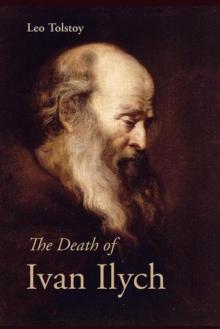 The Death of Ivan Ilych
The Death of Ivan Ilych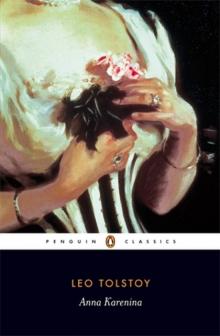 Anna Karenina
Anna Karenina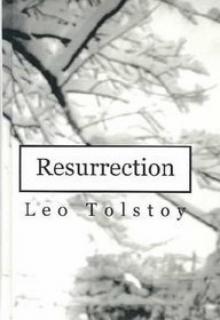 Resurrection
Resurrection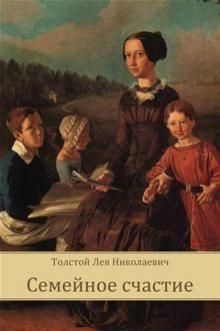 Family Happiness
Family Happiness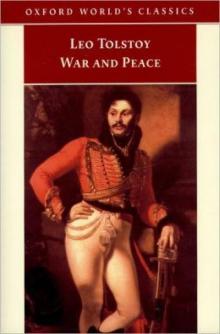 War and Peace
War and Peace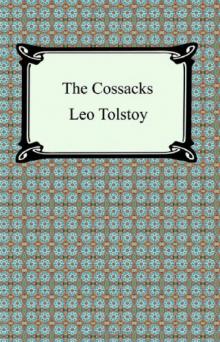 The Cossacks
The Cossacks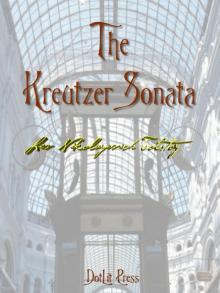 The Kreutzer Sonata
The Kreutzer Sonata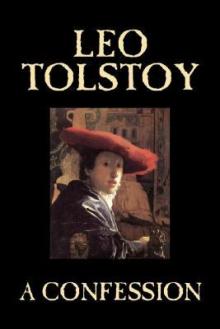 A Confession
A Confession The Kingdom of God Is Within You
The Kingdom of God Is Within You Father Sergius
Father Sergius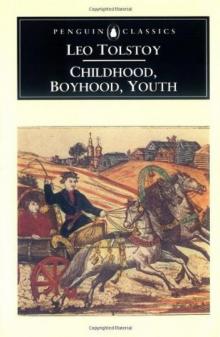 Childhood, Boyhood, Youth
Childhood, Boyhood, Youth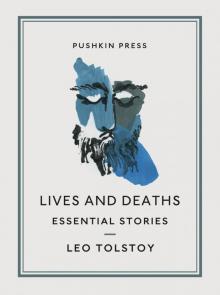 Lives and Deaths
Lives and Deaths The Devil
The Devil The Death of Ivan Ilyich and Master and Man
The Death of Ivan Ilyich and Master and Man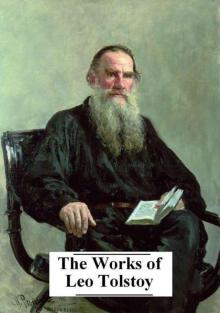 The Complete Works of Leo Tolstoy (25+ Works with active table of contents)
The Complete Works of Leo Tolstoy (25+ Works with active table of contents)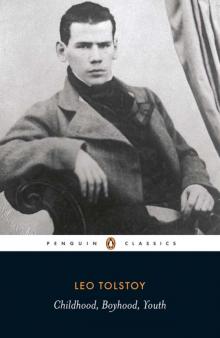 Childhood, Boyhood, Youth (Penguin ed.)
Childhood, Boyhood, Youth (Penguin ed.) The Power of Darkness
The Power of Darkness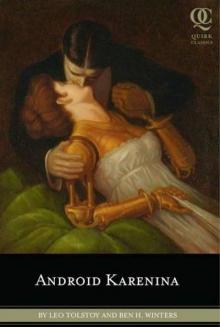 Android Karenina
Android Karenina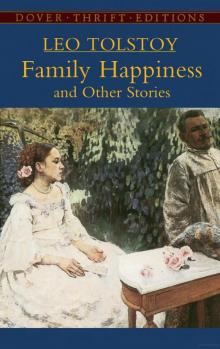 Family Happiness and Other Stories
Family Happiness and Other Stories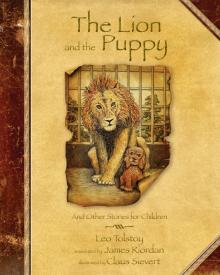 The Lion and the Puppy
The Lion and the Puppy Collected Shorter Fiction, Volume 2
Collected Shorter Fiction, Volume 2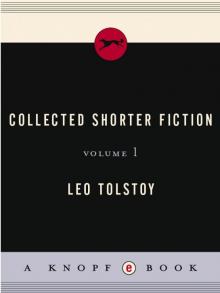 Collected Shorter Fiction, Volume 1
Collected Shorter Fiction, Volume 1